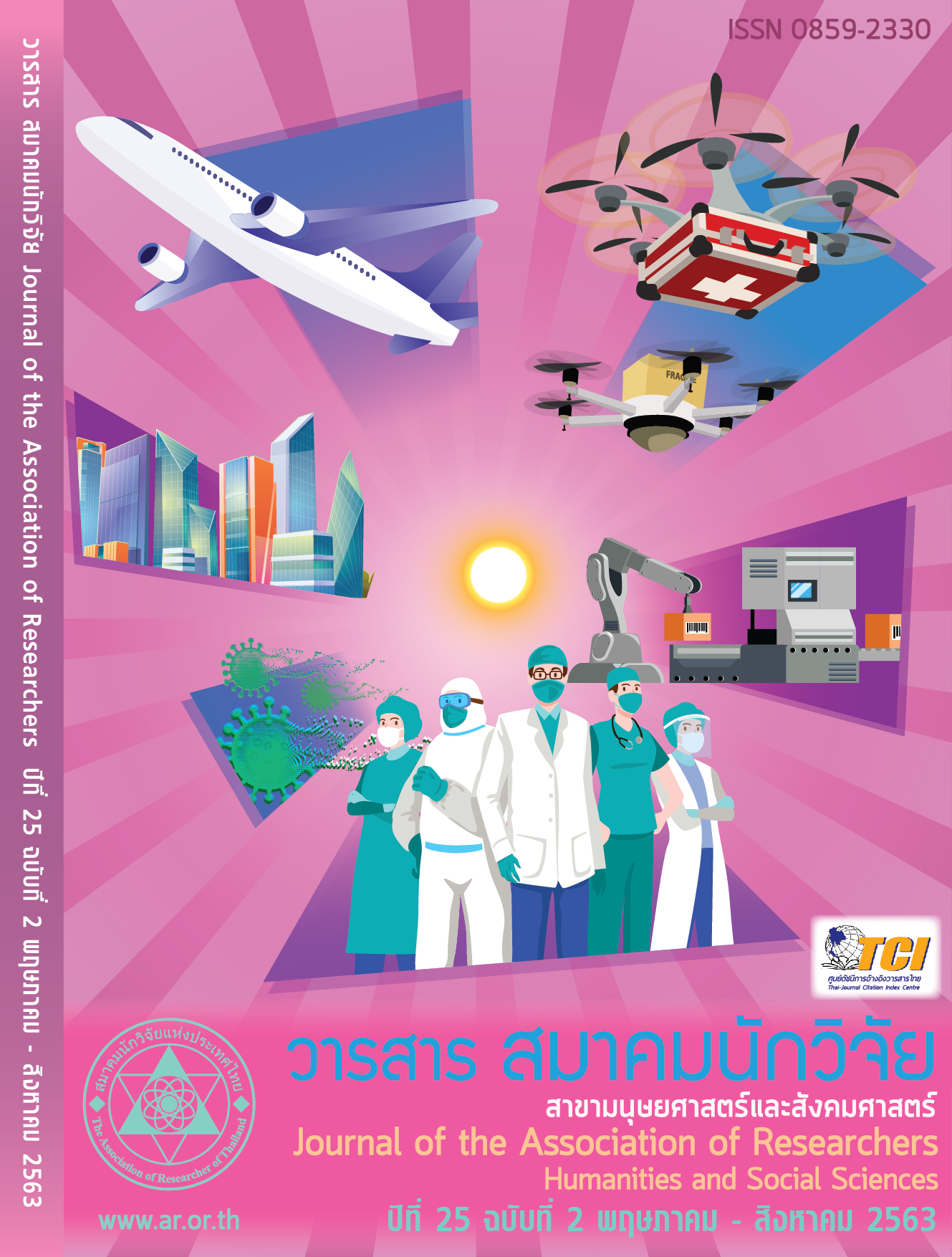Testing The Relationship Between Exchange Rate of Thailand, Gold Price, Crude Oil Price, Interest Rate, Stock Market Return and Bitcoin
Main Article Content
Abstract
The key objective of this paper is to test the short-run and long-run relationships among the exchange rate of the Thai Baht against the dollar, gold price, crude oil price, Private Repurchase Rate, stock market returns, and world Bitcoin price. The analysis was based on daily data from 4th January 2016 to 30 April 2020, totaling of 1,035 observations. The Augmented Dickey-Fuller test was used for testing the stationarity. The Autoregressive Distributed Lag bound test of cointegration was employed in the empirical model to test the long-run relationship. Results indicated that the coefficients of all variables. Results indicated that the repurchase rate, gold price, and stock market returns had negatively and significantly influenced the exchange rate in the short-run. Bitcoin price and Brent crude oil price had positively and significantly influence the exchange rate in the short-run. However, crude oil and Bitcoin prices had not significantly influence the exchange rate in the long-run.
Article Details
บทความที่ปรากฏในวารสารนี้ เป็นความรับผิดชอบของผู้เขียน ซึ่งสมาคมนักวิจัยไม่จำเป็นต้องเห็นด้วยเสมอไป การนำเสนอผลงานวิจัยและบทความในวารสารนี้ไปเผยแพร่สามารถกระทำได้ โดยระบุแหล่งอ้างอิงจาก "วารสารสมาคมนักวิจัย"
References
Akbar, M., & Iqbal, F., & Noor, F. (2019). Bayesian analysis of dynamic linkages among gold price, stock prices, exchange rate, and interest rate in Pakistan. Resources Policy, 62, 154-164.
Almansour B. Y., Almansour A. Y., & M. In’airat. (2020). The impact of capital structure on the performance of microfinance institutions Article Macroeconomic Indicators and Saudi Equity Market: A Time Series Analysis. International Journal of Scientific & Technology Research. 9(2), 4577-4581
.
Corelli, A. (2018). Cryptocurrencies and Exchange Rates: A Relationship and Causality Analysis. Risks, 6(4), 111-121.doi:10.3390/risks6040111
Erdas, L. & Caglar, A. E. (2018). Analysis of the relationships between Bitcoin and exchange rate, commodities, and global indexes by asymmetric causality test. Eastern Journal of European Studies. 9, 27-45.
Khan, A., & Abbas, Z. (2015). Portfolio balance approach: An empirical testing. Journal of Economics and International Finance. 7(6), 137-143.
Narayan, p., Narayan S., & Zheng W. (2010). Gold and oil futures markets: Are markets efficient?. Applied Energy, 87(10), 3299-3303.
Pesaran, H., Smith, R. & Shin, Y. (2001). Bound Testing Approaches to the Analysis of Level Relationship. Journal of Applied Econometrics. 16(3), 289-326.
Tiwari, A. K., & Sahadudheen, I. (2015). Understanding the nexus between oil and gold. Resources Policy. 46(2), 85-91
.
Zhang, H. J., & Dufour, J.-M., & Galbraith, J. (2016). Exchange rates and commodity prices: measuring causality at multiple horizons. Journal of Empirical Finance. 36, March, 100-120.


